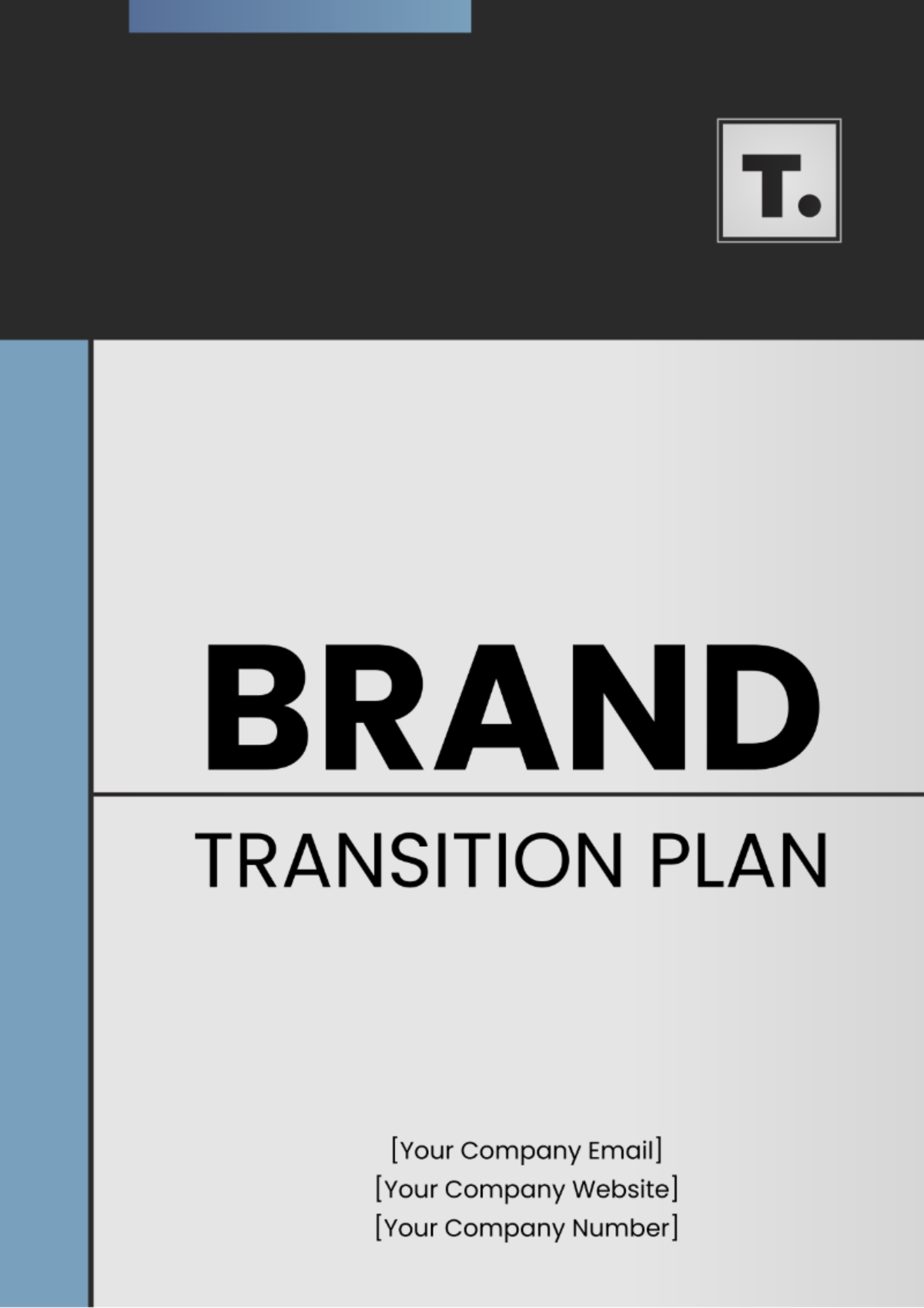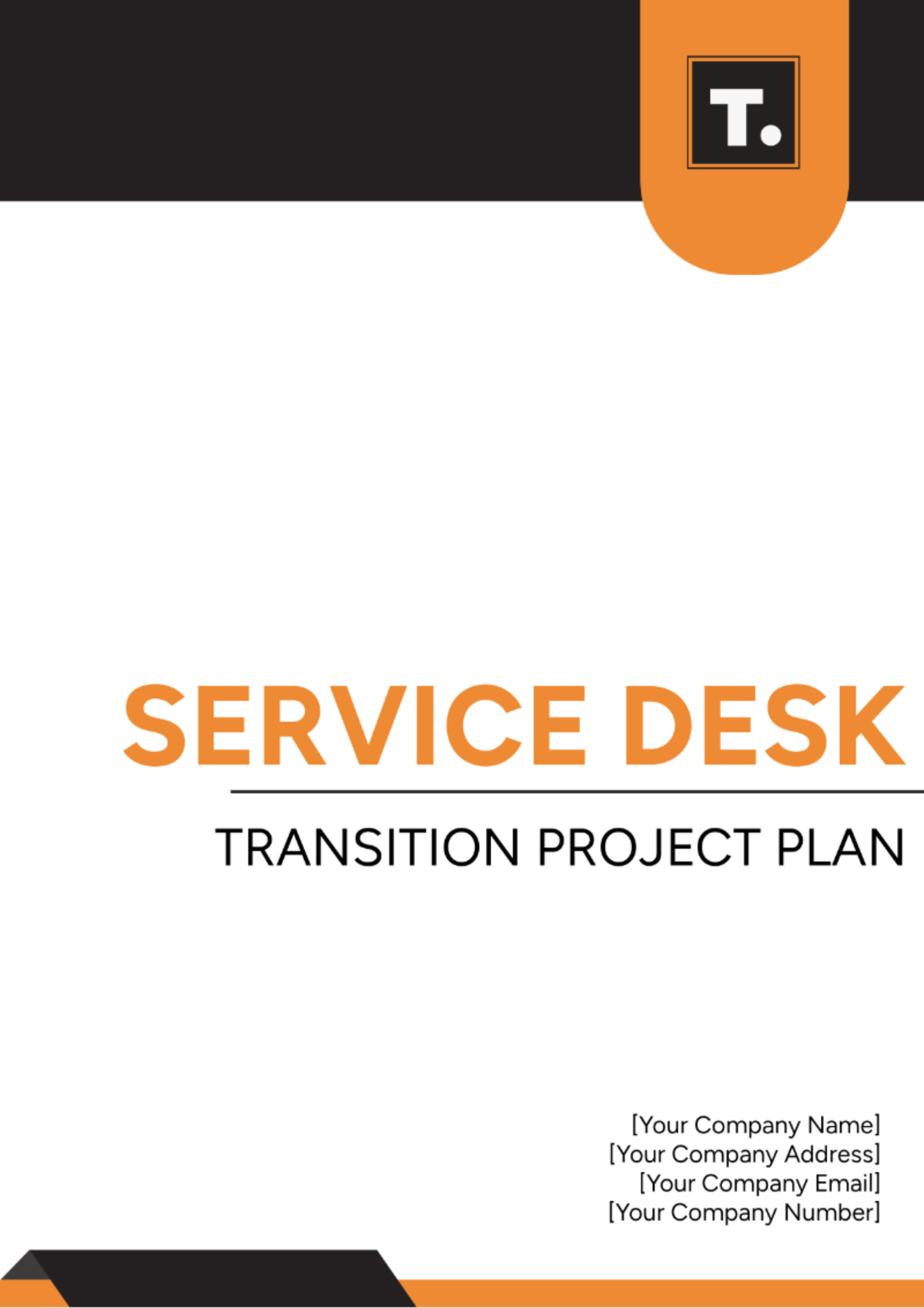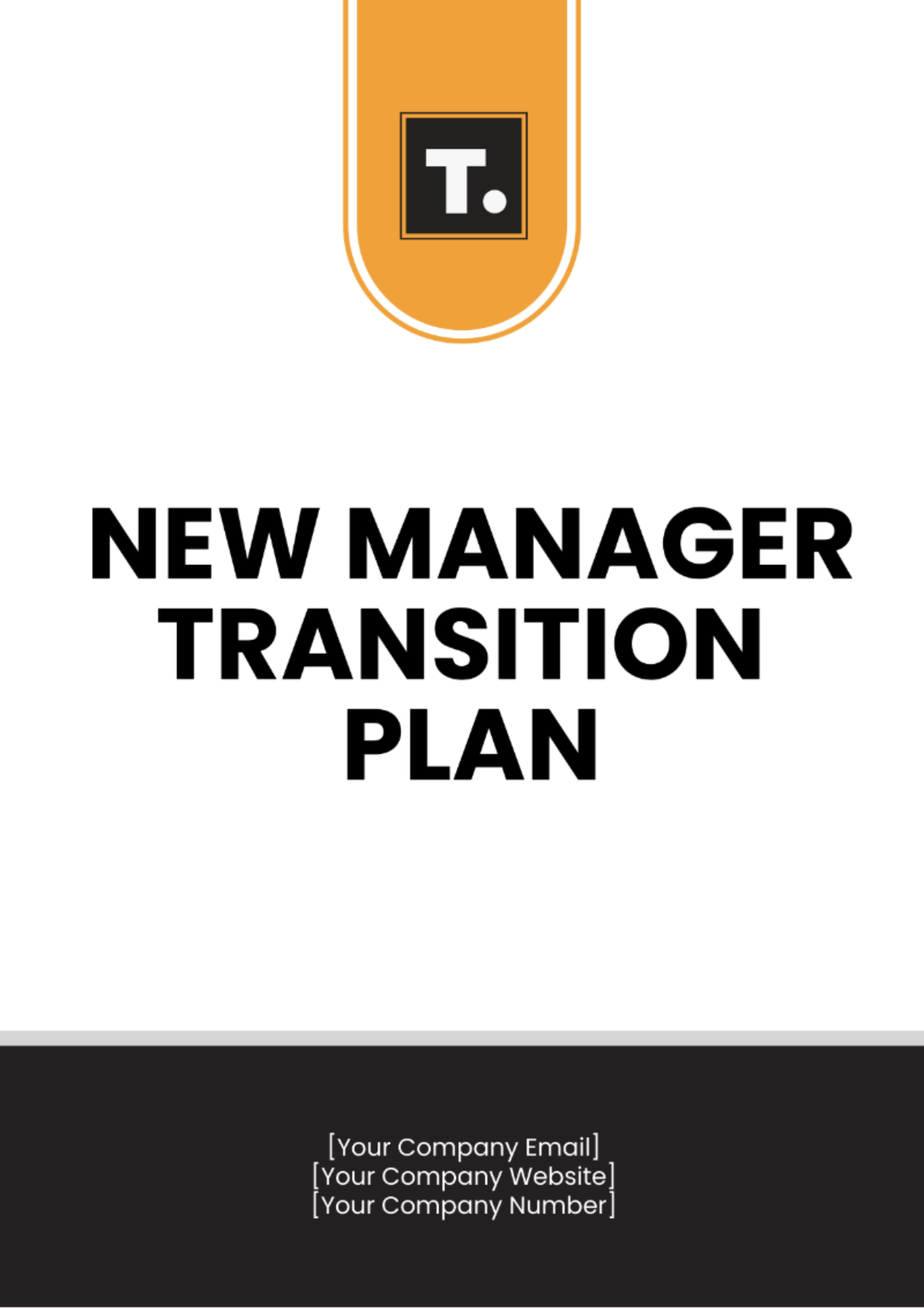Free Process Transition Plan Template
Process Transition Plan
Prepared By: | [YOUR NAME] |
Date Prepared: | [DATE] |
I. Introduction
This Process Transition Plan is designed to provide a detailed framework outlining the necessary steps, actions, and proposed timeline essential for facilitating a smooth transition from the current operational process to the newly implemented process within [Your Company Name]. The primary goal of this plan is to manage changes efficiently, with a keen focus on minimizing any disruptions that may arise during the transition period, while also striving to maximize overall operational efficiency.
II. General Information
Company Email: [Your Email]
Company Social Media: [Your Company Social Media]
III. Current Process Overview
A. Description
[Your Company Name] handles customer inquiries and support requests via phone, email, and a ticketing system, where they are logged, prioritized, and directed to the right department. Agents collect data, work with teams, and record solutions in the system. However, the process faces occasional delays and limited visibility, suggesting potential for improved efficiency and customer satisfaction.
B. Strengths and Weaknesses
Strengths:
Multi-Channel Support: The current process efficiently handles inquiries from various channels, including phone calls, emails, and a ticketing system, ensuring accessibility for customers.
Prioritization and Routing: Requests are promptly prioritized and routed to the appropriate department or agent based on their nature, enabling swift attention to urgent issues and effective resource allocation.
Collaborative Resolution: Agents collaborate across departments to resolve complex issues, leveraging collective expertise and resources to provide comprehensive solutions to customers.
Documentation and Transparency: Interactions and solutions are meticulously documented within the ticketing system, ensuring transparency and providing a reference for future inquiries or analysis.
Weaknesses:
Manual Routing Processes: Occasional delays occur due to manual routing processes, leading to inefficiencies in addressing inquiries and potential customer dissatisfaction with response times.
Limited Visibility: Both agents and customers have limited visibility into the status of inquiries, resulting in uncertainty and the need for improved communication and tracking mechanisms.
Workflow Streamlining Opportunities: There are opportunities to streamline workflows within the process to improve efficiency and reduce response times, enhancing overall operational effectiveness and customer satisfaction.
Scalability Challenges: As the volume of inquiries increases, scalability challenges may arise, requiring proactive measures to ensure continued responsiveness and service quality.
Dependency on Manual Documentation: Reliance on manual documentation processes within the ticketing system may lead to errors or inconsistencies in recording interactions, potentially impacting the accuracy of information and the effectiveness of future support efforts.
IV. New Process Overview
A. Description
The new process at [Your Company Name] integrates automated routing with manual interventions to streamline inquiry handling. It prioritizes inquiries using advanced algorithms, assigning them to appropriate departments or agents instantly. Agents have access to enhanced tools for quick resolution, including a comprehensive knowledge base. Proactive communication keeps customers informed with real-time updates, ensuring transparency and satisfaction.
B. Benefits
Increased Efficiency:
The new process significantly reduces response times by automating routing and prioritization, enabling agents to address inquiries promptly and efficiently.
Enhanced tools and resources empower agents to resolve issues more effectively, further improving overall operational efficiency and customer service quality.
Cost Savings:
Automation of routine tasks and streamlined workflows result in reduced operational costs associated with manual intervention and inefficient resource allocation.
Improved efficiency and customer satisfaction contribute to long-term cost savings through enhanced retention and loyalty.
Other Benefits:
Improved Customer Experience: Proactive communication and expedited resolution times enhance customer satisfaction, fostering positive experiences and brand loyalty.
Scalability and Adaptability: The new process is designed to accommodate fluctuations in inquiry volume and adapt to evolving customer needs, ensuring continued effectiveness and relevance over time.
Data-Driven Insights: Centralized data collection and analysis capabilities provide valuable insights into customer behavior and support performance, facilitating informed decision-making and continuous improvement initiatives.
V. Transition Plan
A. Objectives
The primary objectives of the transition plan are:
Seamless Integration: Make certain that the shift from the current methodology to the newly implemented process occurs seamlessly, thereby preventing any interruptions or disturbances that could adversely affect the delivery of services to customers.
Efficiency Enhancement: Streamline inquiry handling to improve response times and resource allocation through the implementation of automated routing systems and enhanced tools.
Transparency and Communication: Enhance transparency and customer satisfaction by providing proactive communication and real-time updates throughout the resolution process.
Cost Optimization: Identify various opportunities to achieve cost savings by implementing automation, refining and streamlining workflows, and enhancing the overall operational efficiency within the organization.
Stakeholder Alignment: Ensure alignment and engagement of key stakeholders throughout the transition process to foster support and collaboration.
B. Stakeholders
Executive Sponsor: [Executive Sponsor Name] - Senior leader providing guidance, support, and resources, championing the transition plan's importance, and overcoming organizational challenges.
Project Manager: [Project Manager Name] - Oversees plan implementation, coordinates team efforts, manages scope, timeline, and budget, serves as primary stakeholder contact, and communicates progress.
Team Members:
[Team Member 1 Name] - Data Analyst - Analyzes process data, identifies trends, and supports decision-making. Expertise in data analysis and statistical modeling.
[Team Member 2 Name] - Systems Integration Specialist - Integrates new routing systems, ensures functionality and troubleshoots technical issues. Expertise in system architecture and software development.
[Team Member 3 Name] - Training Coordinator - Develops and delivers training programs on the new process. Expertise in instructional design and training facilitation.
[Team Member 4 Name] - Communication Specialist - Develops and executes communication plan, and ensures stakeholder engagement. Expertise in strategic communication and content creation.
C. Tasks and Timeline
Task | Owner | Start Date | End Date | Status |
|---|---|---|---|---|
Data Analysis | [Team Member 1 Name] | [Start Date] | [End Date] | In Progress |
System Integration | [Team Member 2 Name] | [Start Date] | [End Date] | Planned |
Training Program | [Team Member 3 Name] | [Start Date] | [End Date] | Planned |
Communication Plan | [Team Member 4 Name] | [Start Date] | [End Date] | Planned |
D. Risk Management
Risk 1: Delays in the integration of systems necessitate thorough testing before deployment, the development of backup plans, and the maintenance of regular communication.
Risk 2: Effective handling of employee resistance to change can be accomplished through comprehensive strategies like clear communication, training, active feedback incorporation, highlighting change benefits, and employee involvement.
E. Communication Plan
Email: Weekly updates will be sent to stakeholders outlining progress, upcoming milestones, and any important announcements. The Project Manager will oversee email communications to ensure consistency and timeliness.
Meetings: Bi-weekly meetings will be held with stakeholders to provide detailed progress reports, address any concerns, and facilitate open discussion. The Communication Specialist will organize and facilitate these meetings to ensure effective communication and stakeholder engagement.
Responsible: The Communication Responsible Person manages all transition communication, coordinating updates, resolving issues, and ensuring stakeholder alignment. They serve as the central point of contact for communication matters.
F. Training Plan
Training Type | Schedule | Trainer |
|---|---|---|
Workshop 1 (Introductory) | [Date], [Time] | [Trainer Name] |
Workshop 2 (Advanced) | [Date], [Time] | [Trainer Name] |
Workshop 3 (Practical) | [Date], [Time] | [Trainer Name] |
Online Module Access | Available [Start Date] | [Trainer Name] |
Webinar | [Date], [Time] | [Trainer Name] |
VI. Implementation
Step 1: Preparation and Planning: Assess the current process, set clear goals, create a detailed plan, and allocate resources.
Step 2: Stakeholder Engagement: Communicate changes, engage stakeholders, and address concerns transparently.
Step 3: Training and Education: Develop training programs, provide hands-on sessions, and assess effectiveness.
Step 4: Pilot Testing: Test the new process, gather feedback, and refine it as needed.
Step 5: Full-Scale Implementation: Roll out new processes, monitor progress, and offer support.
Step 6: Evaluation and Continuous Improvement: Evaluate effectiveness, gather feedback, and implement improvements.
VII. Monitoring and Evaluation
A. Key Performance Indicators (KPIs)
Average Response Time: Measure the average time taken to respond to customer inquiries, aiming for a decrease compared to the previous process.
Customer Satisfaction Score (CSAT): Assess customer satisfaction with the new process through surveys or feedback mechanisms, targeting an increase in satisfaction levels.
First Contact Resolution Rate: Track the percentage of inquiries resolved upon first contact, aiming for a higher rate to improve efficiency and customer experience.
Employee Adoption Rate: Measure the percentage of employees effectively using the new process, ensuring widespread adoption and compliance.
Cost Savings: Evaluate the cost savings achieved through process optimization, including reduced manual efforts, decreased operational costs, and increased productivity.
B. Continuous Improvement
Regular Reviews: Conduct periodic reviews of the new process performance to identify areas for improvement and ensure alignment with organizational objectives.
Feedback Mechanisms: Implement feedback mechanisms such as surveys, suggestion boxes, or regular meetings to gather insights from stakeholders and team members regarding the effectiveness and usability of the process.
Adjustment Processes: Establish protocols for making adjustments and refinements to the process based on feedback and performance data, ensuring agility and responsiveness to evolving needs and challenges.
VIII. Approval
Make sure that all the required approvals have been obtained before proceeding with the implementation of the transition plan.
Approved by:
Executive Sponsor: [Executive Sponsor Name]
Project Manager: [Project Manager Name]
Department Head: [Department Head Name]

















































